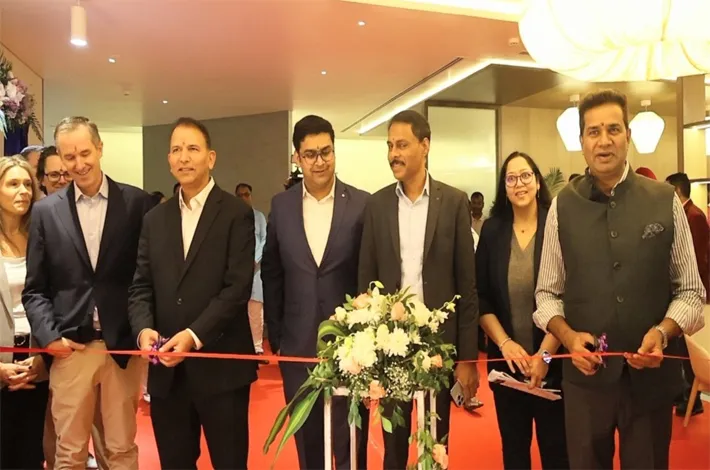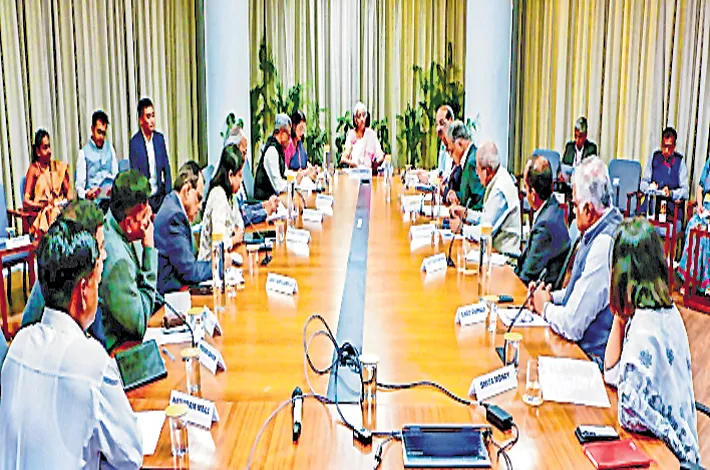Lokesh invites industry to AP, Karnataka cries foul
17-07-2025 12:00:00 AM

We’ve built our industry over decades, contributing 65% of India’s aerospace output. It’s not just about land; it’s about talent, innovation, and a proven ecosystem that we’ve nurtured
-M.B. Patil, Karnataka’s Commerce and Industries Minister
Dear Aerospace Industry, sorry to hear about this. I have a better idea for you: why don’t you look at Andhra Pradesh instead?
-Nara Lokesh Andhra Pradesh’s IT and Industries Minister
metro india news I amaravati
In what has become the latest flashpoint in regional rivalry, Andhra Pradesh’s IT and Industries Minister Nara Lokesh has thrown down the gauntlet to India’s aerospace industry, inviting global players to set up shop in the southeastern state. This bold move follows recent tensions with neighboring Karnataka, which has been a longstanding hub for aerospace and defence manufacturing.
Lokesh’s open call, posted on X (formerly Twitter), came as Karnataka announced the withdrawal of its land acquisition plan for a proposed aerospace growth zone in Devanahalli—a decision that followed over a thousand days of protests by local farmers. Taking a direct swipe, Lokesh wrote, “Dear Aerospace Industry, sorry to hear about this. I have a better idea for you: why don’t you look at Andhra Pradesh instead?”
His message was clear. Andhra Pradesh claims to offer “best-in-class incentives,” a dedicated aerospace policy, and over 8,000 acres of ready-to-use land just outside Bengaluru—a strategic proposition for companies eyeing India’s burgeoning aerospace sector. Lokesh’s outreach seems to be more than economic; it’s a political signal of a revived Andhra Pradesh under the TDP-led government, which regained power in June 2024 and is aggressively pushing its industrial agenda.
Unsurprisingly, Karnataka’s response was swift and defensive. Karnataka’s Commerce and Industries Minister M.B. Patil countered with a robust defence of the state’s aerospace ecosystem. “Karnataka offers India’s No. 1 aerospace and defence environment,” Patil asserted. “We’ve built our industry over decades, contributing 65% of India’s aerospace output. It’s not just about land; it’s about talent, innovation, and a proven ecosystem that we’ve nurtured.”
He also highlighted Karnataka’s ambitions to become one of India’s first trillion-dollar economies and emphasized that the state continues to attract investments across various industries. “We will always ensure the land and ecosystem needed to support growth,” Patil stated firmly.
This exchange underscores a broader regional rivalry as states compete for dominance in emerging sectors. Andhra Pradesh has recently unveiled ambitious plans to become a major aerospace and space tech hub, with policies targeting Rs. 50,000 crore to Rs. 1 lakh crore investments over five years.
Historically, tensions over aerospace projects aren’t new. There were murmurs of Karnataka’s potential shift of a HAL manufacturing facility proposed in Andhra Pradesh, which later clarified it would be a new facility rather than a relocation. Still, mistrust persists, fuelling the competition.
With Karnataka pulling back on key projects and Andhra Pradesh extending its hand, the regional rivalry is intensifying—not just over land, but over India’s aerospace future leadership. As the skies heat up, more than aircraft hang in the balance; regional pride and economic leadership take flight.








